| Srl | Item |
| 1 |
ID:
119395
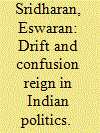

|
|
|
|
|
| Publication |
2013.
|
| Summary/Abstract |
[T]he prospect of India without a stable governing coalition-whether established by the Congress Party, by the BJP, or by regional parties supported by either the Congress or the BJP-is not beyond the realm of possibility.
|
|
|
|
|
|
|
|
|
|
|
|
|
|
|
|
| 2 |
ID:
111784
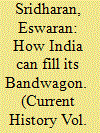

|
|
|
|
|
| Publication |
2012.
|
| Summary/Abstract |
"If India can create a vibrant regional economic community around itself, the gains will be not just economic but geopolitical in both the Asian and global contexts."
|
|
|
|
|
|
|
|
|
|
|
|
|
|
|
|
| 3 |
ID:
172475
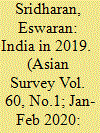

|
|
|
|
|
| Summary/Abstract |
The major development in India in 2019 was the national election which returned Narendra Modi’s Bharatiya Janata Party to power with a larger majority and which, along with post-election ideological assertiveness, poses the question of whether India’s party system is a new one-party hegemony, this time of the Bharatiya Janata.
|
|
|
|
|
|
|
|
|
|
|
|
|
|
|
|
| 4 |
ID:
179258
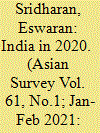

|
|
|
|
|
| Summary/Abstract |
The year 2020 was one of multiple challenges for India and for the Modi-led Bharatiya Janata Party government. The year began with mass protests against the Citizen (Amendment) Act, which minority Muslims saw as threatening their citizen rights and was widely felt to be unconstitutional, and ended with mass protests by farmers against market-oriented farm reforms. The coronavirus pandemic arrived in January and by the end of the year had caused the world’s second-largest caseload (10.3 million infections) and 149,000 deaths. The government responded with a strict lockdown, resulting in a severe economic contraction, although the economy and foreign investment picked up in the last quarter, buoyed by vaccine hopes and a partial economic recovery. On the foreign front, Chinese incursions in June along the Line of Actual Control, the de facto border, led to a tense standoff that remained unresolved at year-end. Politically, the BJP remained not only entrenched but somewhat further empowered against a weak and divided opposition, with Modi’s popularity ratings high.
|
|
|
|
|
|
|
|
|
|
|
|
|
|
|
|
| 5 |
ID:
153833
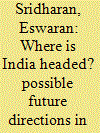

|
|
|
|
|
| Summary/Abstract |
The Bharatiya Janata Party (BJP)-led National Democratic Alliance (NDA) government of Prime Minister Narendra Modi has been extraordinarily active in foreign affairs, logging as many as 48 foreign visits in its first two years for both bilateral and multilateral meetings, as well as a host of high-level visits to India by world leaders including by the heads of government of the US, China, UK, France and Japan. What have been the drivers of this extraordinary foreign policy dynamism and what does it portend for possible future directions in Indian foreign policy, not only of the current government but into the more distant future? This article consists of a reasoned speculation about possible future directions in Indian foreign policy, building on recent foreign policy developments and also engaging with the literature on power transitions and rising powers, and posing the larger geopolitical question of what kind of power India will be in the future. It argues that the direction of Indian foreign policy will be substantially dependent on US–China–Russia dynamics in the Asia–Pacific region and that the gradual shift towards the United States and its allies and partners will continue. It concludes that India will find it difficult, even with sustained high growth, to join the ranks of the Great Powers due to being constrained by geography and by the capabilities of its nuclear neighbours.
|
|
|
|
|
|
|
|
|
|
|
|
|
|
|
|